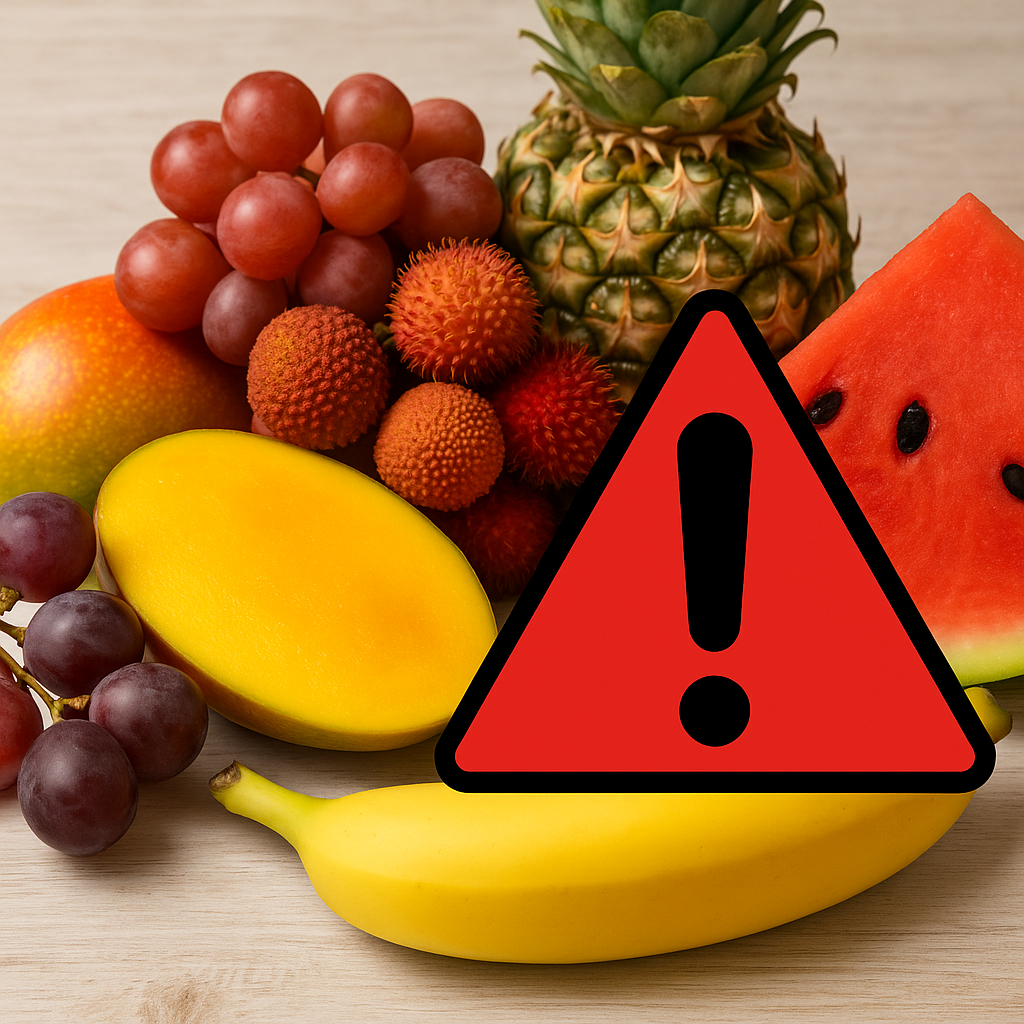
Sweet but Dangerous: Fruits Diabetics Need to Watch Out For
Share
Living with diabetes doesn’t mean giving up fruits entirely, but it does mean being mindful of which ones you consume and in what quantity. While fruits are generally healthy and packed with vitamins, minerals, and fiber, some are naturally high in sugar and can cause blood glucose spikes. Understanding which fruits to limit can help you manage your condition effectively.
Why Fruits Can Be Tricky for Diabetics
Fruits contain natural sugars like fructose and glucose. While these are healthier than refined sugar, they still impact blood sugar levels. For diabetics, monitoring the glycemic index (GI) and glycemic load (GL) of fruits is essential, as these measure how quickly a food raises blood sugar.
Fruits Diabetics Should Watch Out For
1. Mangoes 🥭
- Why to be cautious: Mangoes are delicious but high in natural sugars.
- Effect on blood sugar: They have a high GI, which can quickly raise glucose levels.
- Tip: If you can’t resist, stick to small slices and pair them with protein or healthy fats.
2. Grapes 🍇
- Why to be cautious: Grapes, especially red and black varieties, are loaded with natural sugars.
- Effect on blood sugar: Even a small handful can cause spikes.
- Tip: Opt for controlled portions or choose green grapes, which have a slightly lower sugar content.
3. Bananas 🍌
- Why to be cautious: Bananas are high in carbohydrates and natural sugars.
- Effect on blood sugar: Overripe bananas have an even higher GI due to increased sugar concentration.
- Tip: Stick to half a small banana and pair it with nut butter for better balance.
4. Pineapples 🍍
- Why to be cautious: Pineapples are sweet and refreshing but have a high glycemic index.
- Effect on blood sugar: Can cause rapid glucose elevation if eaten in large amounts.
- Tip: Choose small portions and combine with high-fiber foods.
5. Watermelons 🍉
- Why to be cautious: Watermelons are hydrating but very high in sugar.
- Effect on blood sugar: Despite being mostly water, they can lead to sudden spikes.
- Tip: Eat in small cubes and avoid pairing with other high-sugar fruits.
6. Lychees & Rambutans 🍒
- Why to be cautious: These tropical fruits are tiny but sugar-packed.
- Effect on blood sugar: Even a few pieces can elevate glucose rapidly.
- Tip: Enjoy occasionally and in very limited quantities.
Safer Fruit Alternatives
Not all fruits are off-limits! Choose low-GI options like:
- 🍓 Berries (strawberries, blueberries, raspberries)
- 🍏 Green apples
- 🥝 Kiwis
- 🍊 Oranges
- 🥭 Avocados (yes, technically a fruit!)
These are rich in fiber and have slower glucose absorption, making them safer for diabetics.
Tips for Eating Fruits Safely
- ✅ Check portion sizes — moderation is key.
- ✅ Pair with protein or healthy fats to slow sugar absorption.
- ✅ Avoid fruit juices — they lack fiber and spike blood sugar faster.
- ✅ Prefer whole fruits over dried or processed ones.
- ✅ Monitor your blood sugar after trying new fruits.
Fruits are an important part of a balanced diet, but for diabetics, choosing the right ones and controlling portions is crucial. By understanding which fruits to limit and which to enjoy more freely, you can keep your blood sugar in check while still benefiting from nature’s sweetness.
